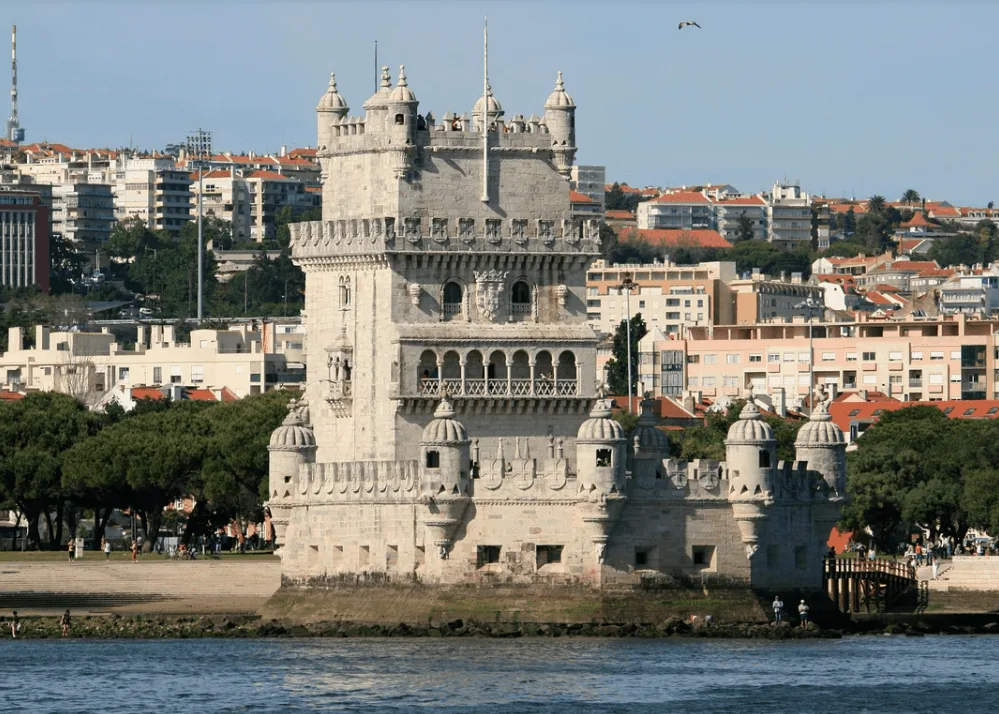Once upon a time, a king deemed it necessary to construct a fortification to protect his city from intruders.
The result?
One of the most magnificent towers in the world which has become one of the most famous landmarks in Lisbon.
In this post, you’ll discover the ultimate list of Belém Tower facts, let’s take a closer look!
1. The King who commissioned the tower never saw it
Belém Tower was built as part of a plan conceived by King João II (1455-1495), known as “John II.” He planned to defend the city of Lisbon, which had become one of the major cities in the world in the late 15th century, by constructing 3 major fortresses.
The first two forts were the Fort of São Sebastião de Caparica, partially built by his father King John I, and the Fort of Cascais, which was built in 1488.
Even though he expressed the need for a fortification near the mouth of the Tagus River to supplement the two existing forts, he never saw it constructed, nor did he see the plan of it.

2. It’s built on a small outcrop in the Tagus River
Perhaps one of the most fascinating Belém Tower facts is that it was constructed on a small outcrop of the Tagus River, near the mouth of the river on its northern bank.
This made it a perfect strategic location because it offers a perfect view of the ships arriving in the city.
Over the centuries, the river lost ground to the northern bank which means that the time the tower was constructed, it was located further into the river, making it all the more impressive.
Right now, the tower can be reached by a small bridge.
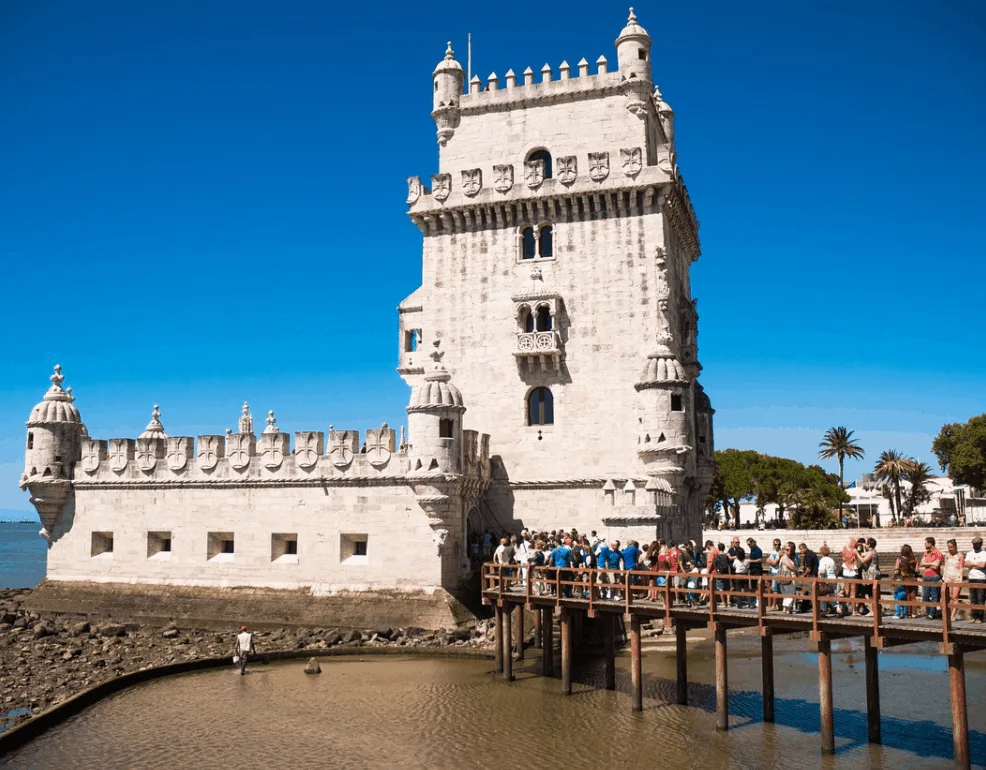
3. It was more than merely an additional line of defense
Apart from serving its main purpose as a military defense post, the tower became an important ceremonial gateway to Lisbon, emphasizing the fact that Portugal was one of the most influential powers in the world.
This was the Age of Discoveries, a time in the 15th, 16th centuries, and a period in history that the Portuguese Empire flourished, and the Belém Tower confirmed this fact to everybody that arrived in Lisbon.
4. It replaced a 1000-ton ship which used to protect the city
Another one of those interesting Belém Tower facts is that there was already a line of defense located in this particular location. This 1,000-ton ship was moored near the island that the tower was built on and served as a crossfire with the two existing forts.
The “Grande Nau” (Great Ship) was armed with multiple canons and this wooden structure was replaced with a stone fortification in the early 16th century.
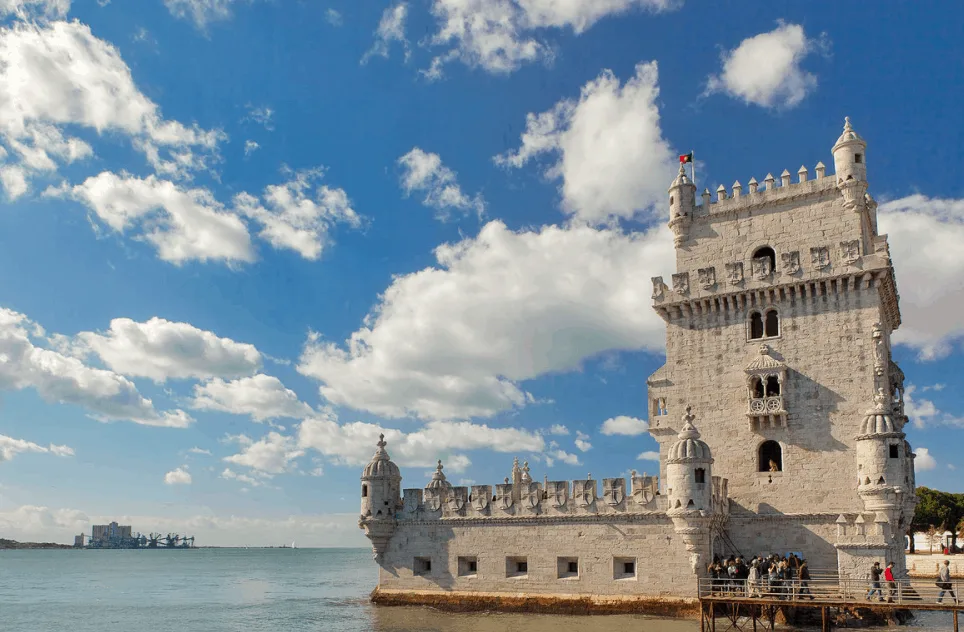
5. It took 5 years to be completed
By the year 1514, the plans to build the tower were concrete and military architect Francisco de Arruda was engaged for the job by King Manuel I of Portugal. He had a lot of experience as he built numerous fortresses in North Africa before.
Upon his arrival, he was referred to as “Master of the works of the Belém stronghold” by the King and managed to complete the project in about 5 years, completing the tower in 1519.
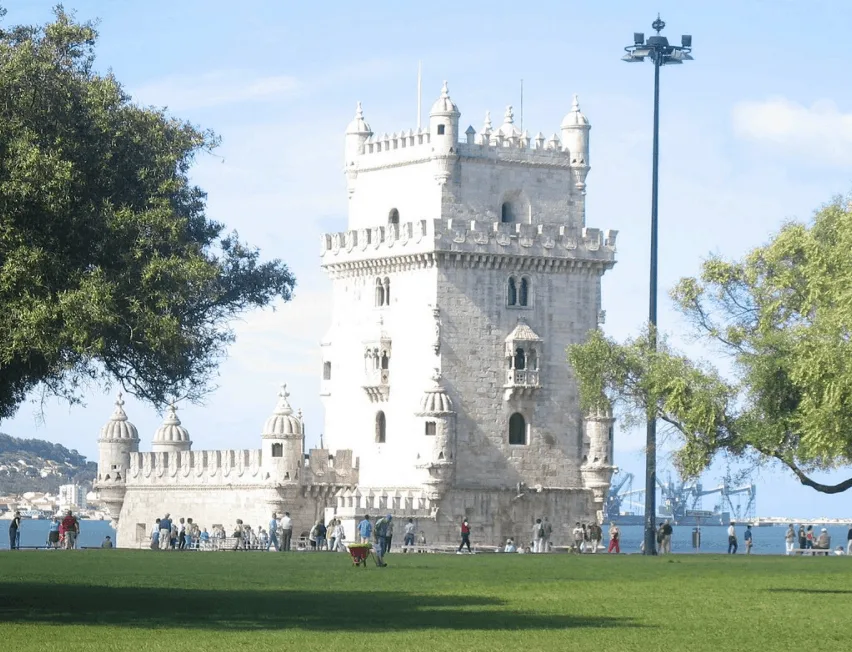
6. Rocks from a nearby construction site were used to build it
Francisco de Arruda didn’t have to look too far to acquire the rocks needed for the construction of the Belém Tower. He could simply use some of the rocks used at a nearby construction site, that of the Jerónimos Monastery.
The stones used for the construction are referred to as “lioz” and are a particular type of limestone local to Lisbon and used in structures all around the city.
By 1516, about 763 blocks and 504 stones had been delivered!
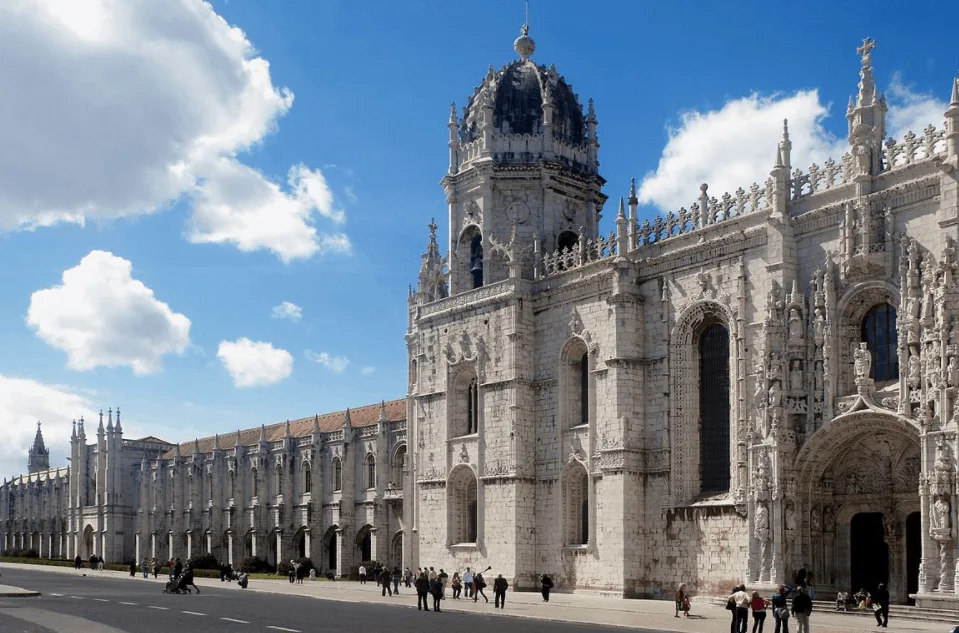
7. The fortress has another official name
Belém Tower is commonly named after the location it was constructed at, Santa Maria de Belém, one of the districts of the metropolitan area of Lisbon.
The official name of the tower is “Torre de São Vicente de Belém” or the “Tower of Saint Vincent,” as it was originally named after the patron saint of Lisbon.
8. It’s a prime example of the Manueline architectural style
Belém Tower can be described as the epitome of the Manueline architectural style, also sometimes referred to as the Portuguese late Gothic style. This is for the reason that it originated in the 16th century and marks the transition from Late Gothic to the Renaissance.
The emphasis of this style is the integration of maritime elements and the glorifying of the discoveries made by famous Portuguese explorers such as Vasco da Gama (the discoverer of India) and Pedro Álvares Cabral (the discoverer of Brazil).
The square tower is about 12 meters (39 feet) wide and stands about 30 meters (98 feet) tall.
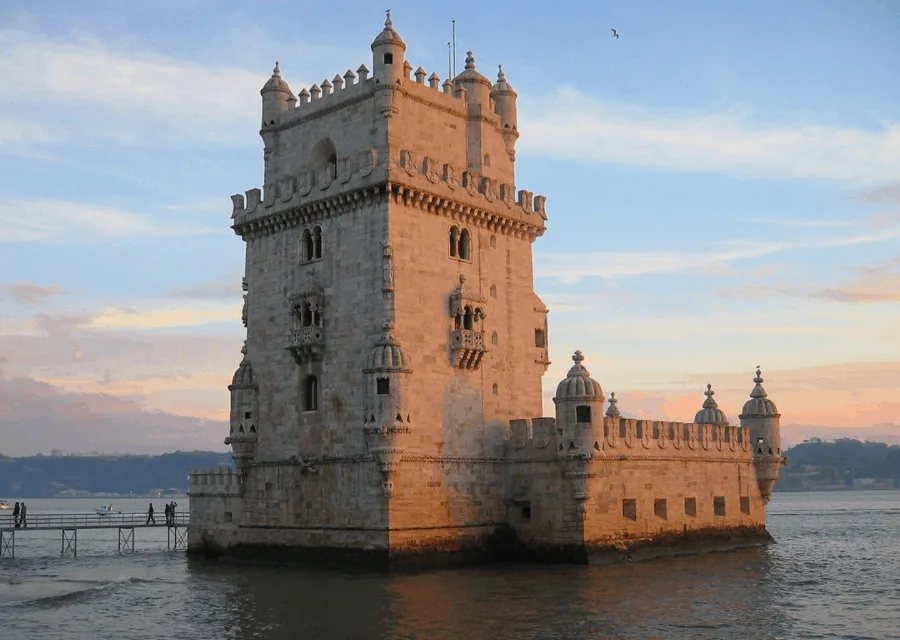
9. It has many features of another architectural style as well
The tower’s designer, the military architect Francisco de Arruda, already designed a lot of fortresses in Morocco. This clearly shows in the fact that it incorporates elements of the Moorish architectural style as well.
Some of these elements include the magnificent decorations, the arched windows, the balconies, and the ribbed bartizan turrets and cupolas of the watchtowers.
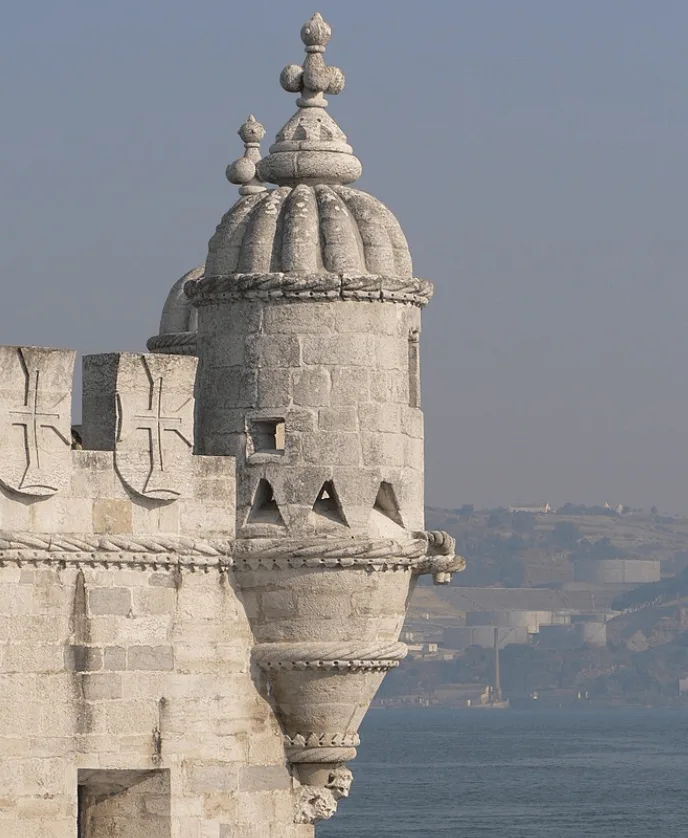
10. The dungeon of the tower served as a prison for centuries
The Duke of Alba attacked Belém Tower in the year 1580, and after just a few hours, the Portuguese in the tower surrendered to the Spanish forces. It was then that it was decided that the dungeon would serve as a prison, a purpose it served for multiple centuries.
The final unfortunate souls to be locked up in this horrible prison were the political opponents of King Manuel I (1828-1834).
Let’s just say that you didn’t want to be descending these steps!
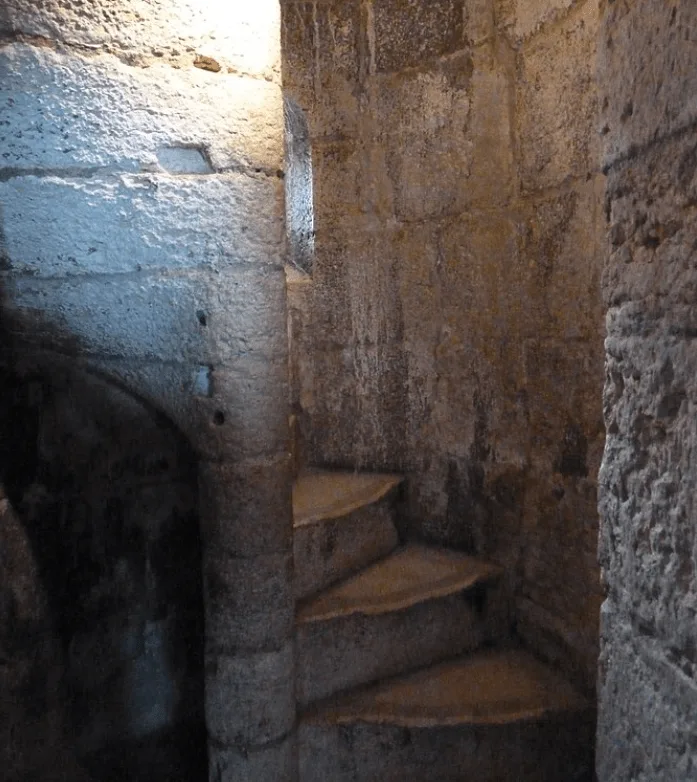
11. It was used to collect taxes for many centuries
So the tower served as a military fortification, a ceremonial gateway, and a prison for most of its existence. It had another important role as well.
A plaque inside the tower confirms that it was already used by 1655 as a control post to collect taxes from ships entering the harbor of Lisbon.
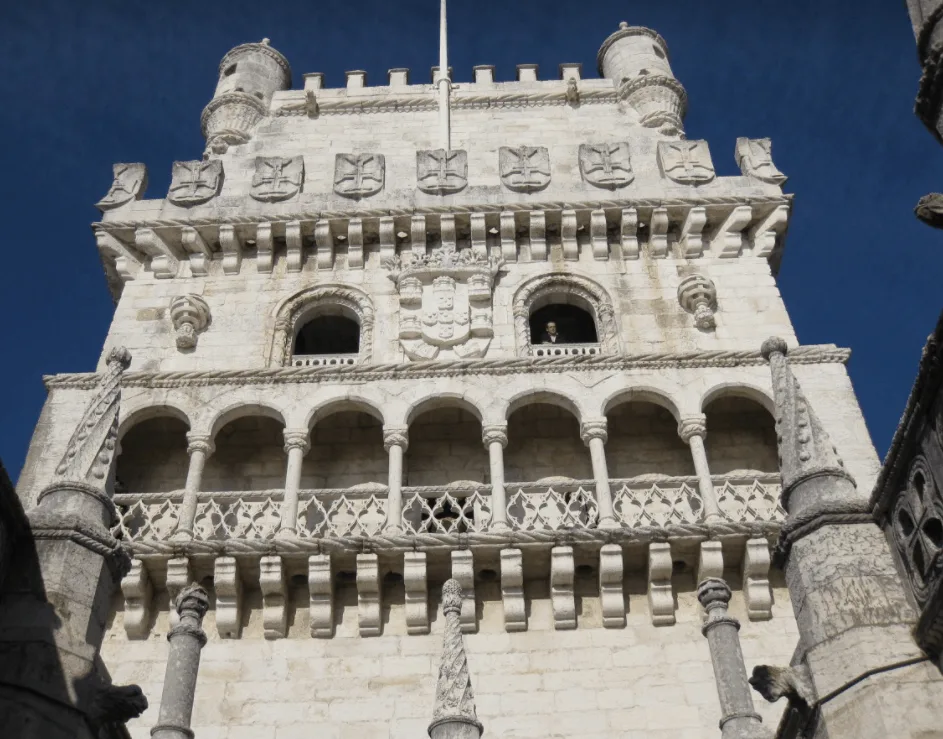
12. An additional fort was built in the late 18th century
In the 1780s, Maria I of Portugal ordered the construction of an additional fort near the tower which was named “Fort of Bom Sucesso.” It appears that the fort was completed around 1802.
One of the most peculiar Belém Tower facts is that the fort and tower were connected and occupied by the French between 1808 and 1814.
The fort was expanded in 1815 after the French were defeated and now houses the “Museu do Combatente” (Combatant’s museum), and another famous landmark in Lisbon, the Monument to Overseas Combatants, is located right next to it.
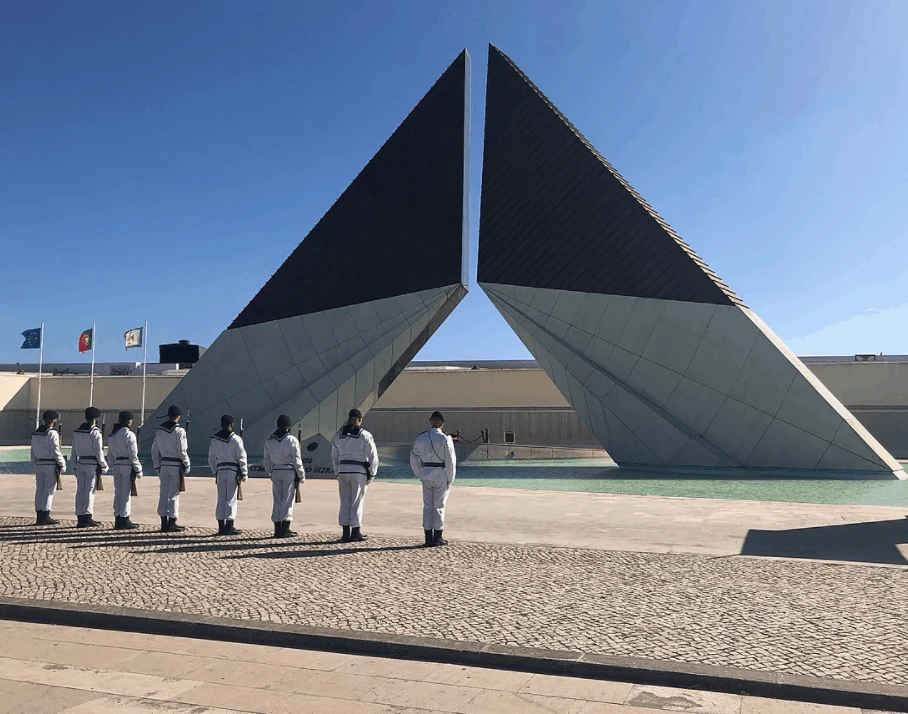
13. The lower bastion is equipped with 17 canons
Belém Tower has been of significant importance for Lisbon as a military fortification. It was equipped with 17 canons inside the vaulted lower bastion of the tower.
These canons were permanently pointing towards the river through embrasures, ready to fire at any enemy ship approaching!
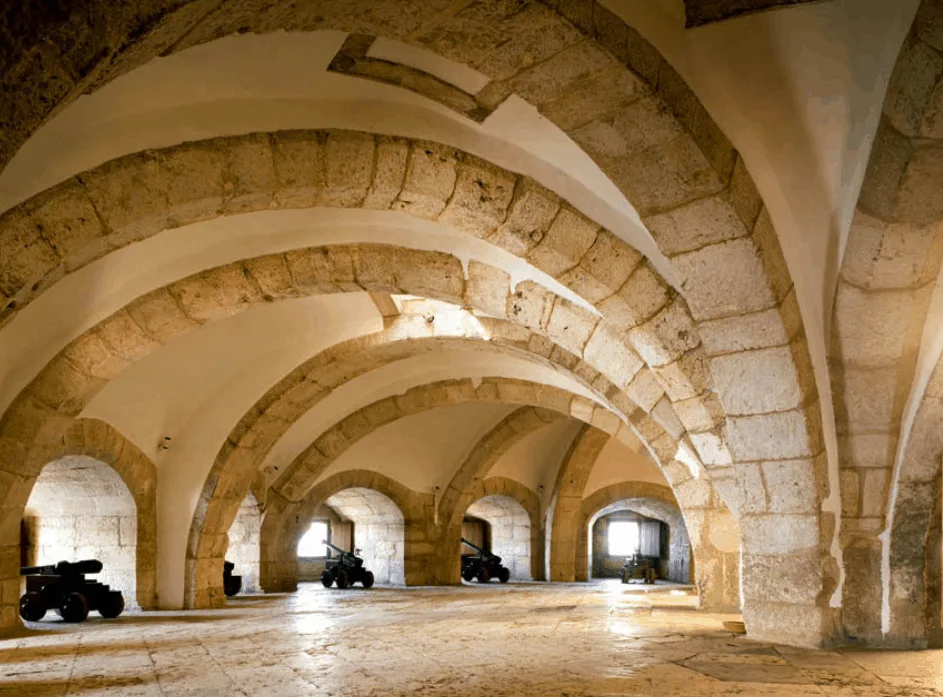
14. The top floor of Belém Tower offers amazing views
The tower consists of 4 stories and tourists can visit each of these stories. The top story offers a terrace providing amazing views over the Tagus River and part of the city of Lisbon!
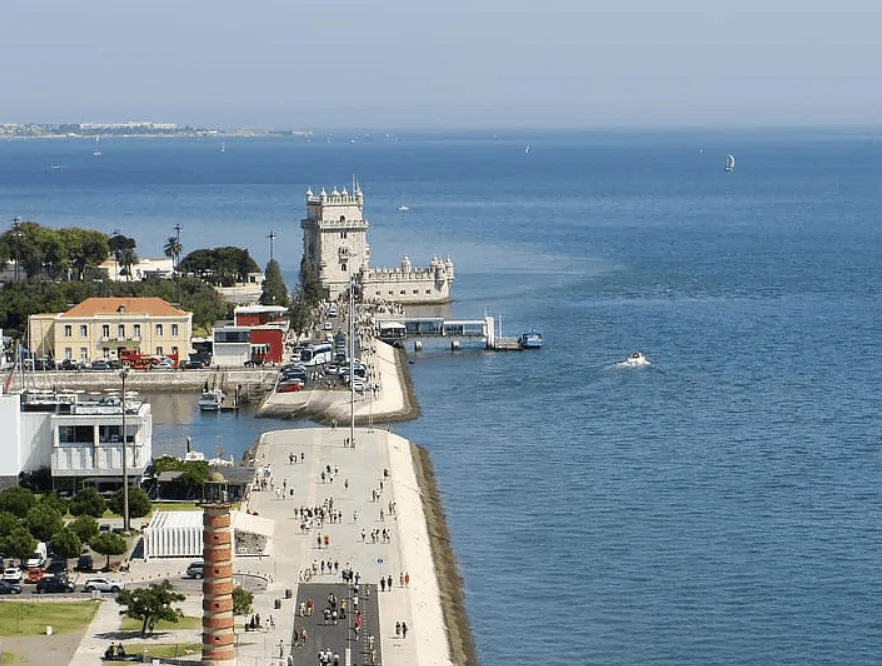
15. The tower is one of the most famous landmarks in Portugal
In the 1990s, the management of the tower was transferred to the “Instituto Português do Património Arquitectónico,” which began a serious renovation project that lasted from February 1997 until January 1998.
Belém Tower has been inscribed, together with the Jerónimos Monastery, as a UNESCO World Heritage site since 1983. It has also been included in the registry of the 7 Wonders of Portugal since 2007, along with Pena Palace and 5 other historical sites.
It’s one of the most famous landmarks in Portugal and one of the most popular tourist attractions in Lisbon!
